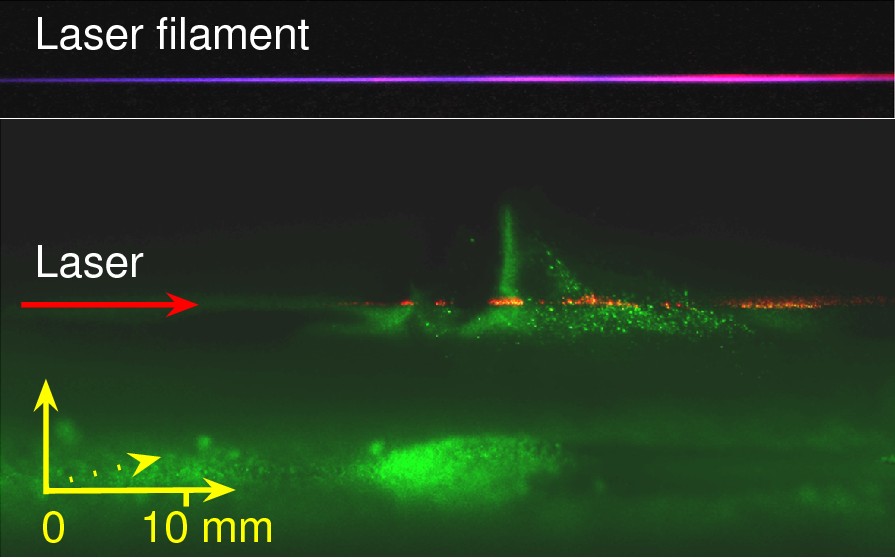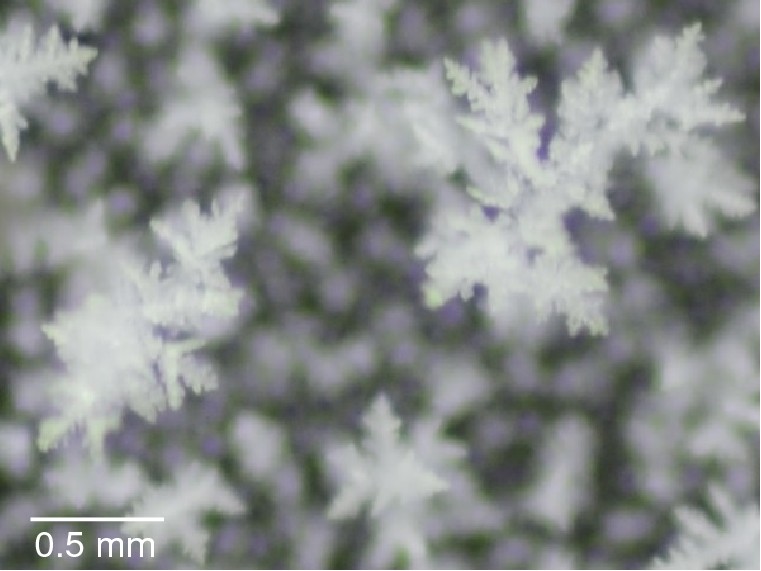The ability to trigger precipitation on demand would present huge socio-economical benefits for many arid countries around the world. Ju et al. at the Shanghai Institute of Optics and Fine Mechanics in China and Laval University in Canada have now reported an optical approach that can be used to induce the formation of rain and snow (Opt. Lett. Doc. ID 157795; 2012).
“Cloud-seeding” using silver salt particles as condensation nuclei is the most common way of artificially inducing rain, although its effectiveness is questionable. In 2010, Jér?me Kasparian and co-workers demonstrated a more environmentally friendly approach that uses self-guided ionized filaments generated from ultrashort 220 mJ pulses at a repetition rate of 10 Hz (Nature Photon. 4, 451–456; 2010).
In contrast, Ju et al. used a relatively low-energy femtosecond Ti:sapphire laser to deliver 9mJ pulses at a repetition rate of 1kHz. They say that such high-repetition laser pulses could provide a more efficient way of inducing macroscopic water condensation and snow formation.
The laser pulses were focused by an f/70 concave mirror into a 50cm×50cm×20cm diffusion cloud chamber filled with ambient air, where they generated filaments of around 10cm in length. A 532nm probe beam from a semiconductor laser was co-propagated with the femtosecond laser beam to allow observation of the filamentation-induced event via Mie scattering. A vertical temperature gradient was maintained in the chamber; the bottom base plate was held at ?46 °C while the top of the chamber was kept at room temperature.
Continuous heating of the filaments in the chamber generated an intense updraft of warm, moist air. This air cooled as it travelled upwards, resulting in further water condensation via convectio n and cyclone-like action to form particles with diameters of 40–300μm. The researchers say that this process can be seen with the naked eye.
After 30 minutes of irradiation, approximately 13mg of snow was scattered below the laser filament centre across an area measuring 2.0cm×1.5cm. This snow had an HNO3 concentration of 0.032 mol L?1, which confirms efficient H2O–HNO3 ice nucleation due to the photo-oxidative chemistry of nitrogen triggered by filamentation.
 |
| Figure 1. Recorded side Mie scattering around the filament induced by the probe beam with an exposure time of 1/4000 s. The heap of snowpack below the filament center was illuminated by the stray light of the green laser beam.(Image by SIOM) |
 |
| Figure 2. Close up shot for the snowpack in Figure 1. (Image by SIOM) |